How to Check Storage on Mac | Free up Disk Space on Mac
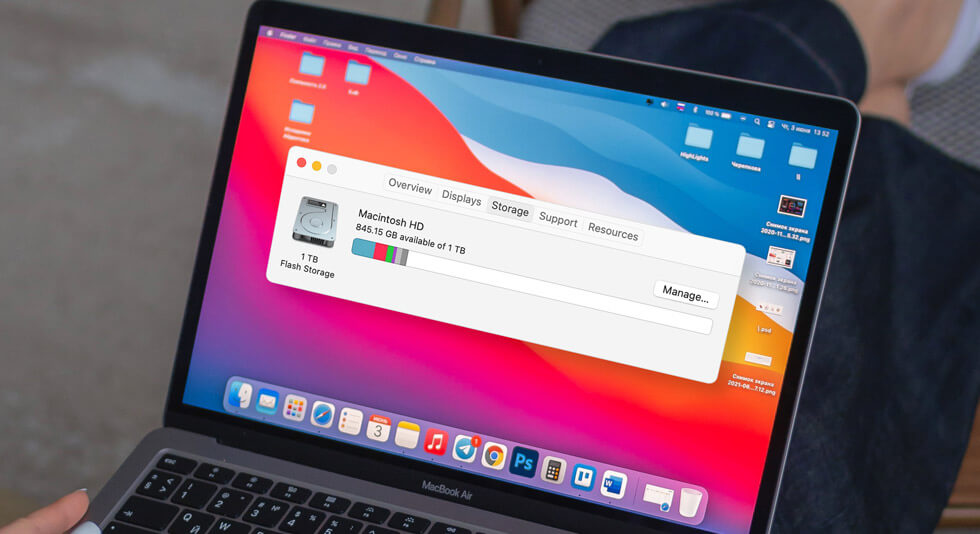
There is this game that you earnestly want to play on your Mac, or it’s this video editing app that you want on board to quench your vlogging desires. But, the fact is you are running out of storage space. So, how to check disk space on Mac? How to find out what is it that’s taking up storage on your Mac? We’ll discuss all such ways in this post. So, read on!
Various Ways In Which You Can Check Storage Space on Your MacBook
| Table of Contents |
|---|
| 1. Using The Apple Icon
2. Check Mac’s Disk Space Using Disk Utility 3. Bring Into Action A Third-Party Utility 4. Use The Finder To Find Disk Space On Mac |
1. Using The Apple Icon
An Apple a day can tell you about your Mac’s disk space. Your Mac has an inbuilt tool that tells you detailed disk usage as well as free disk space. And, trust us, it’s as simple as 1-2-3 –
1. Click on the Apple icon from the top-left corner of your desktop and then click on About This Mac.
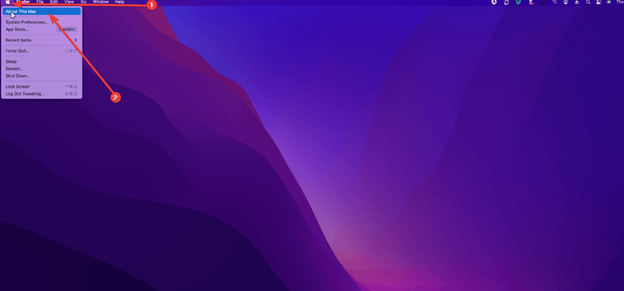
2. On the Windows that occurs next, click on the Storage tab.
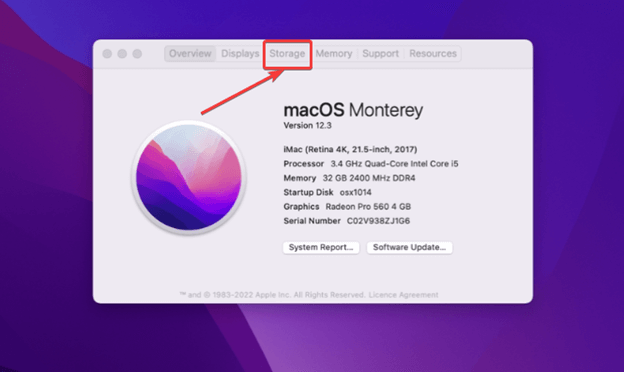
3. You will now be able to see the disk space that is available for all your storage devices. You can hover over the bar graph to see exactly what’s taking up space.
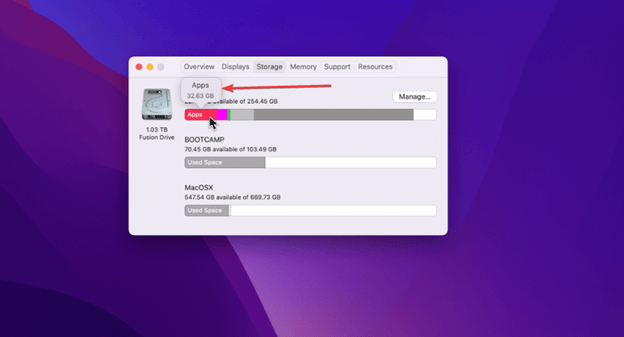
2. Check Mac’s Disk Space Using Disk Utility
Another built-in tool that can help you check your Mac’s or your MacBook’s storage space is Disk Utility.
1. Click on the Finder on your Mac’s dock located at the bottom of your Mac’s desktop.
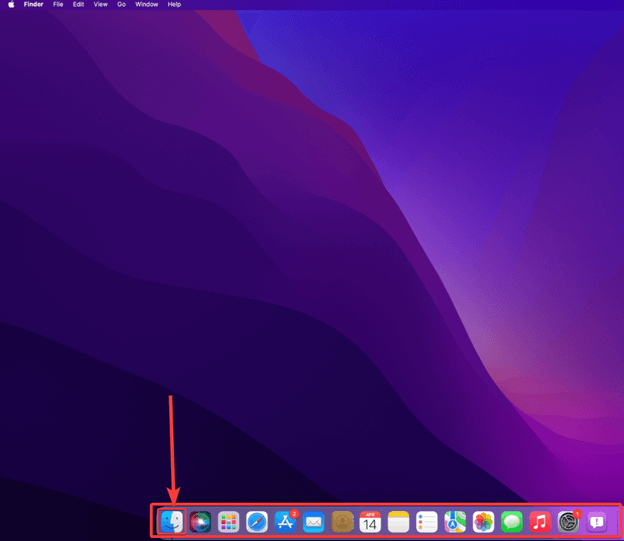
2. From the left-hand side, click on Applications.
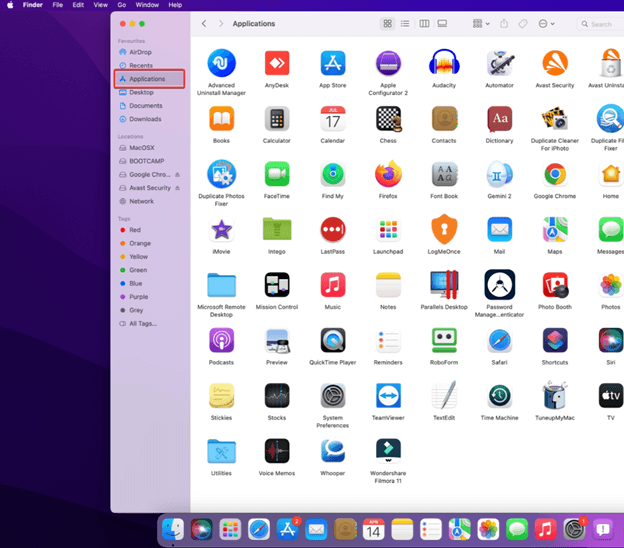
3. From the right-hand side, locate the Utilities folder and double-click on it.
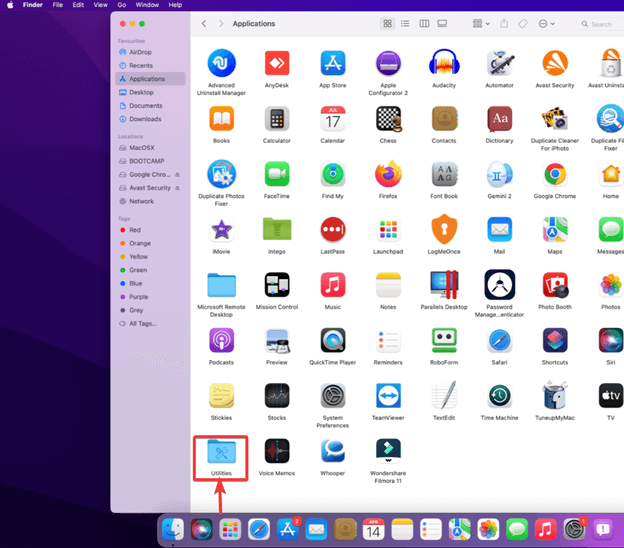
4. Double-click on the Disk Utility icon signified by a stethoscope and a hard disk.
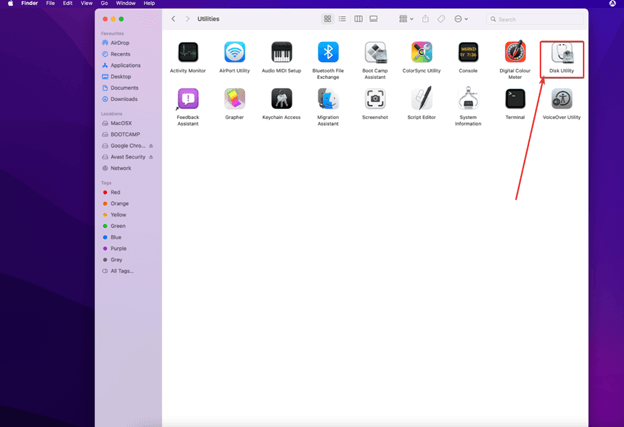
5. The window that ensues will give you the complete storage information megabyte by megabyte. You can click on the disk and further check the storage space as well.
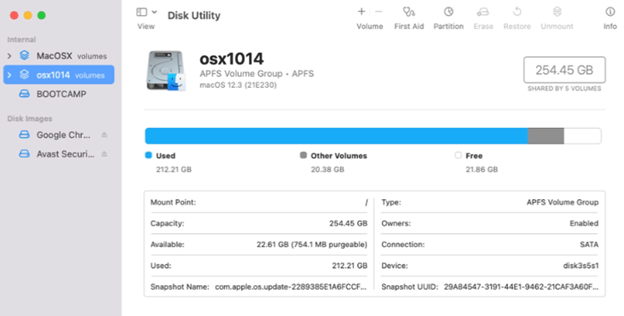
3. Bring Into Action A Third-Party Utility
By now you probably know how much disk space you have and what exactly is taking your Mac’s or your MacBook’s precious storage. However, this brings, to the front two things – 1. You have probably spent a lot of time checking disk space on your Mac 2. You are clueless about what needs to be done next? What files and folders need to be removed.
You can put your trust in a third-party app like Disk Analyzer Pro which is one of the best utilities to not just analyze disk space but even clean unwanted files as well. You might be wondering, why to put your faith in Disk Analyzer Pro for Mac –
- It has an inbuilt file explorer which makes checking Mac’s disk space a cakewalk.
- It generates a detailed and comprehensive disk analysis report where you can statistics of storage in terms of size, file count, and the percentage used across files.
- You can sort files by date and not just that it even has an Obsolete Files section which lets you zero down on obsolete files that are just sitting and hogging your storage space. Clean these up and see for yourself how much space you would have earned back.
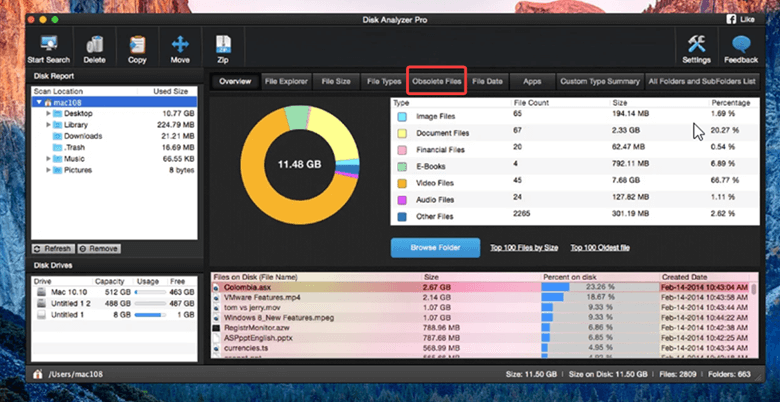
- Large and old files are one of the biggest consumers of disk space on Mac. Disk Analyzer Pro helps you identify all such files so that you can delete them in the blink of an eye and regain disk storage space on your Mac.
Get Disk Analyzer Pro For Mac
4. Use The Finder To Find Disk Space On Mac
If your precious disk space is “Taken“ on Mac, then your very Finder could be your Bryan Mills because it can help you find what’s taking up space on your disk. To use the Finder to check disk space on Mac, here are the steps –
1. Open the Finder from the dock at the bottom of your Mac’s desktop.

2. From the left-hand side, right-click on the drive whose storage space you want to see and click on Get Info
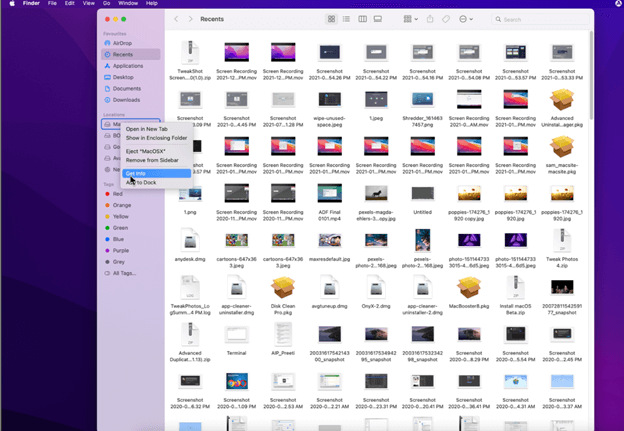
3. You will now be able to see the disk storage space with regards to the total capacity and the available space.
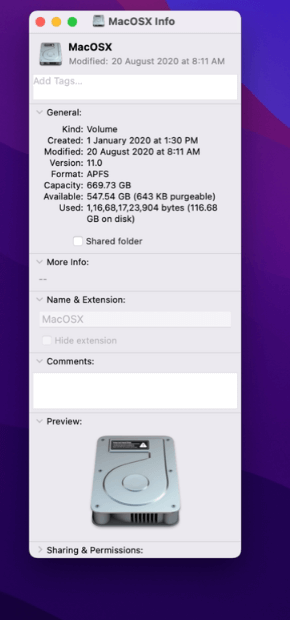
5. Check Disk Space On Mac in A Snap
We like to call this method a couple of clicks and snap method and here is why – To find the storage space of a location on your Mac, first, open the Finder. Then, from the left-hand side, select a location whose storage space you want to find. And, now hit the spacebar on your keyboard. This comes across as magic of sorts, isn’t it?
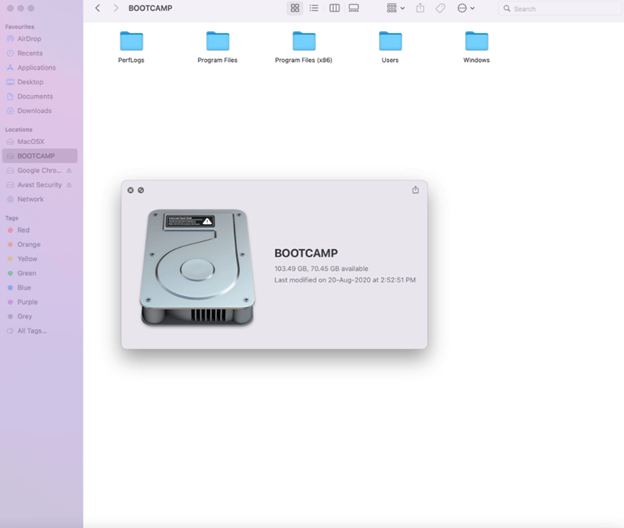
A Note On How To Free Up Disk Space
Knowing how to check hard drive space on Mac is one thing and freeing up disk space on Mac is another. Both these skills go hand in hand. Now that you are well versed in how to check disk space on Mac, check out this comprehensive guide on how efficiently you can clean up disk space on Mac and that too without making any errors.
Wrapping Up
Knowing how to check disk space on Mac can help you keep a track of whether or not you are running out of space on your Mac. And, if your precious disk space is slipping out of your hands, you can always bring into force a utility like Disk Analyzer Pro which will help you find exactly what’s taking up disk space.
Frequently Asked Questions
How can I make More disk Space on mac?
Once you know how to check disk space on Mac, you can use a third-party tool like Disk Analyzer Pro to free up disk space. As for manual methods, you can clean the browser cache, and remove unwanted applications
How to Free up Disk Space on Mac Startup Disk?
To free up disk space on the Mac startup disk you can take measures like emptying the trash bin, finding and removing duplicate files, getting rid of time machine snapshots, and removing apps that you no longer need.
How to Empty Mac Cache?
To empty the Mac cache click on Go and then Go to Finder. Then type ~/Library/Caches and again click on Go. Once in the cache folder, locate the items that you don’t want and delete them.


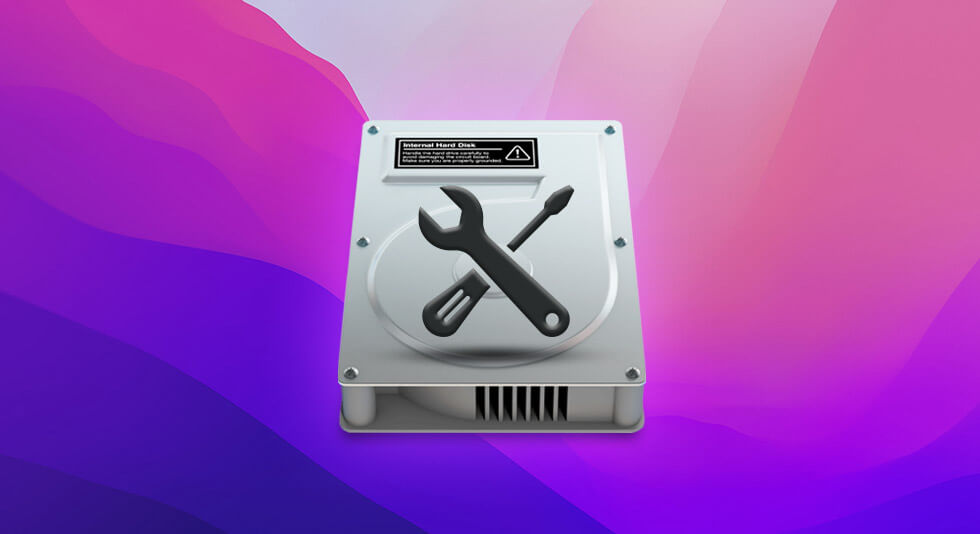 Best Disk Repair Software For Mac in 2024 [Updated]
Best Disk Repair Software For Mac in 2024 [Updated] Best Cloud Storage Service for Mac in 2024 | Cloud-Based Option For Apple User
Best Cloud Storage Service for Mac in 2024 | Cloud-Based Option For Apple User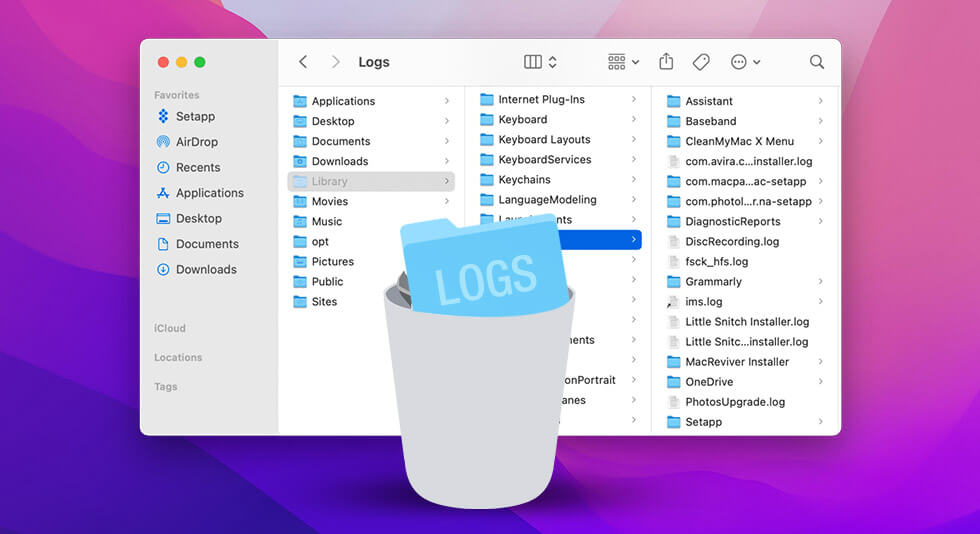 How to Delete System Log Files on Your Mac
How to Delete System Log Files on Your Mac